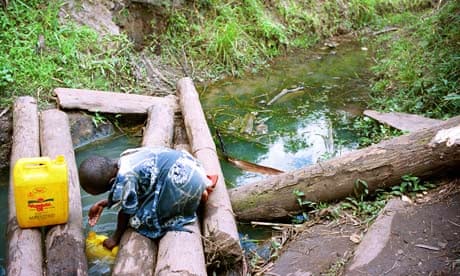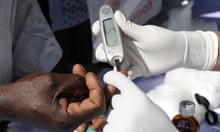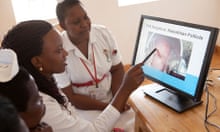Children should be seen and not heard, the Victorians used to say. Not so now in Europe and the US, but in the developing world, according to advocate Dr Kate Armstrong, who says their needs – let alone their rights – are still being forgotten.
In her analysis, the targets now being considered by the World Health Organisation and others to reduce the impact of heart disease, cancer and other non-infectious diseases (NDCs), are in danger of being focused solely on adults. Children in the poorest countries die of cancer and asthma and diabetes, but the targets under consideration aim to bring down the deaths of adults over the age of 30.
This is what she said when I woke her up at 3am (apologies) last Friday, having failed to realise she was in Australia, where she is based:
In 2002, 1.2 million children under the age of 20 died of non-communicable diseases. Cancer is a classic example. In a low income country, a child is diagnosed with cancer and the parents are told there is nothing we can do – you will have to take your child home to die. There is no question of palliative care. The parents are devastated but they drift off into the yonder and it is all you ever hear. In low income countries, children get sick and then they die and they are gone and their story is gone.
Children just don't have a voice. They are not there on the streets waving placards and they are very easy to overlook.
On Monday, a conference in Oakland, California, aims to put that right. Armstrong's organisation CLAN (Caring and Living as Neighbours) is a leading player in the NCD Child Conference, which is calling for children to be fully included in the efforts to tackle the "lifestyle diseases" caused not just by eating the wrong foods and lack of exercise but by environmental problems and genetic misfortunes. This was kickstarted by a high-level meeting on NCDs at the United Nations in New York last September, but although children's needs were discussed, CLAN and others say they are in danger of being forgotten.
An estimated 43 million children were overweight or obese in 2010, with 35 million of these children living in developing countries. Type 1 diabetes, rheumatic heart disease and asthma are among the conditions that hit children hard. Yet the latest draft targets released by WHO contain no child/adolescent targets for reducing marketing of unhealthy food to children, nor any on asthma, obesity, hepatitis infection, or physical activity, say the conference organisers. It might seem obvious that diseases caused or worsened by diet and lack of exercise and other lifestyle factors need to be tackled in children, to prevent the epidemic in adults. But there are no targets on prevention as yet, says Armstrong.
Sir George Alleyne, director emeritus of the Pan American Health Organisation, is a key supporter:
It is urgent that we insert a more careful and studied consideration of the role of children and adolescents in the plans and programmes to give effect to the Political Declaration made at the New York meeting. The momentum from New York will be accelerated if we address now the role of children and adolescents as sufferers from NCDs and see that earliest stage as critical for the prevention and control of these diseases. We have the evidence to do so.





Comments (…)
Sign in or create your Guardian account to join the discussion